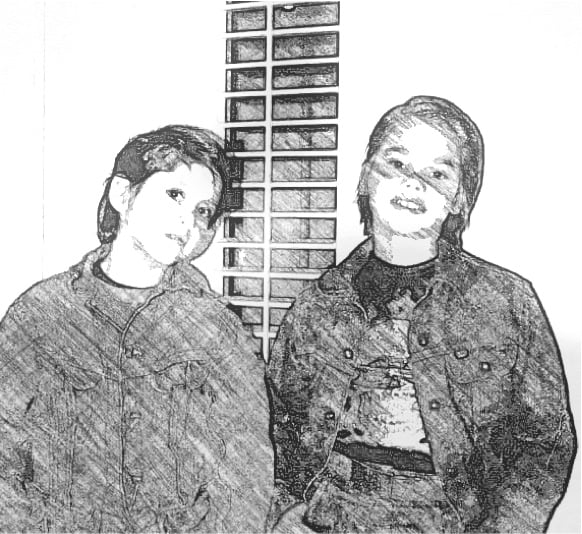This innovation flips all definitions of pious and penitent on their heads. * Moshiach “will bring the righteous to repentance” - the perfectly pious will achieve t’shuva only after Moshiach comes.
By Rabbi Boruch Merkur

Moshiach will bring the righteous (tzaddikim) to repentance.
Did you know that the flip-side is also true? Penitents (baalei t’shuva) will become the tzaddikim.
The future tzaddikim are destined to attain their righteousness through t’shuva, repentance, and not from simply being born into a good upbringing that was never challenged. Since they confronted temptation and withstood the test, their righteousness stands strong forever. Thus, their virtue surpasses that of native tzaddikim.[1]
This innovation flips all operating definitions of tzaddik and baal t’shuva on their heads.
Think about it. T’shuva is most pronounced when one purposefully rebels against G-d yet returns to Him wholeheartedly, transforming evil itself.[2] But only someone born into religion – the Frum From Birth, FFB - can truly rebel against it.[3]
By contrast, those whom we typically call “baalei t‘shuva,” BTs, have nothing to rebel against, other than the secularism they grew up with. That is exactly what they had to do to become observant – face the massive challenge and sacrifice, transforming even the mindset they were indoctrinated with from inception. Formally classified as “tinokos sh’nishb’u,” children raised in a non-religious home and lifestyle, “baalei t’shuva” are actually wholesome in their core; they are victims of circumstance and their ongoing struggle with trauma.
Anything the so-called frum-from-birthers do wrong, on the other hand, is truly a rebellion. They know and were inculcated with what was right - at least in theory - and they rebel, perhaps for no reason other than curiosity or convenience, perhaps simply bred of a toxic household. Yet true FFBs become baalei t’shuvaonce they break their once rebellious hearts and become genuine through and through.
In any event, the main distinction between baalei t’shuva and tzaddikim, BTs and FFBs, is which direction they are heading. Tzaddikim are the ones who have the power to make a dwelling place for G-d in the lowest possible dimension, drawing G-dliness down into the physical world - through Mitzvos, etc., but particularly through confronting the dark forces of the world and successfully fending them off, fighting evil by eradicating it.
Baalei t’shuva are those who - like Elazar ben Durdaya - strive to transcend the world to unite with G-d Above. With regard to evil, “they recognize and appreciate that the inner purpose and intent of evil is its ‘dvar Hashem,’ its inherent Divinity. Through repentance, the baal t’shuva elevates the (G-dly spark that resides in) evil to holiness.[4]
*
The Rebbe often proclaimed that the Jewish people as a whole have already done t’shuva. Have the righteous already done t’shuva too? What is the timeline for this characteristic accomplishment of Moshiach, to bring the righteous to repentance?
Fascinatingly, the Rebbe says that tzaddikim achieve t’shuva only after the Era of Moshiach has begun[5]:
King David, a”h, prayed, “So may it be in holiness that I should behold You”[6] - that this love of beholding, a thirst and lovesickness for G-d, shall … also be experienced by tzaddikim. For this powerful love is actually the distinction of baalei t’shuva, and “in the place where baalei t’shuva stand, even the perfectly righteous cannot stand.”
However, [the first redeemer] Moshe Rabbeinu, a”h, prior to his passing, merited t’shuva. And the function of Moshiach [the final redeemer] is that he “will bring tzaddikim to repentance.” The perfectly righteous will achieve t’shuva, which is dependent specifically on the advent of Moshiach.
The meaning then of “So may it be in holiness that I should behold You” is that tzaddikim will be inspired to t’shuva, etc.: The Jewish people as a whole must repent prior to the advent of Moshiach. In fact, Moshiach’s arrival depends on it, as our Sages say, “If the Jewish people repent, they are redeemed, etc.” However, tzaddikim will merit the virtue of t’shuva only after the advent of Moshiach.[7]
Ultimately though, no matter where we stand in this late stage of the game, BTs and FFBs are meant to join forces. Each contributes something unique, and depend on each other to perfect the world:
“In the place where baalei t’shuva stand, even the perfectly righteous cannot stand, etc.,” for “they are drawn [towards G-d] with greater strength,” as they invoke G-d’s core infinity, Atzmus Ein Sof, etc. Nevertheless, they only manifest Divinity On High, in the spiritual realm. To bring that revelation to be experienced in the world requires the tzaddikim. Thus, there must be the joining of forces of both tzaddikim and baalei t’shuva.[8]
NOTES:
[1] Seifer HaSichos 5751, pg. 70 FN 84, derived from Rashi on B’Reishis 6:6.
[2] Or less pronounced but still requiring t’shuva even if he does not “sin; he is merely separate from G-d and not on fire for Him –Likkutei Torah Shir HaShirim 44d. The same is true of one who does not open up fully in prayer —Ibid 45a.
[3] Ironically, the model for repentance at this level is the repentance of the Erev Rav, the Mixed Multitude - of converts! - for converts embody the greatest possible transformation. See Likkutei Sichos Vol. 16, pg. 414.
[4] Likkutei Sichos Vol. 16, pg. 413-414
[5] But see Seifer HaSichos, pg. 690, where it says that that too has already been accomplished.
[6] See Zohar Parshas Truma 140b, beg.
[7] Likkutei Torah Drushim L’Shmini Atzeres 92b
[8] Hemshech 5666, pg. 533